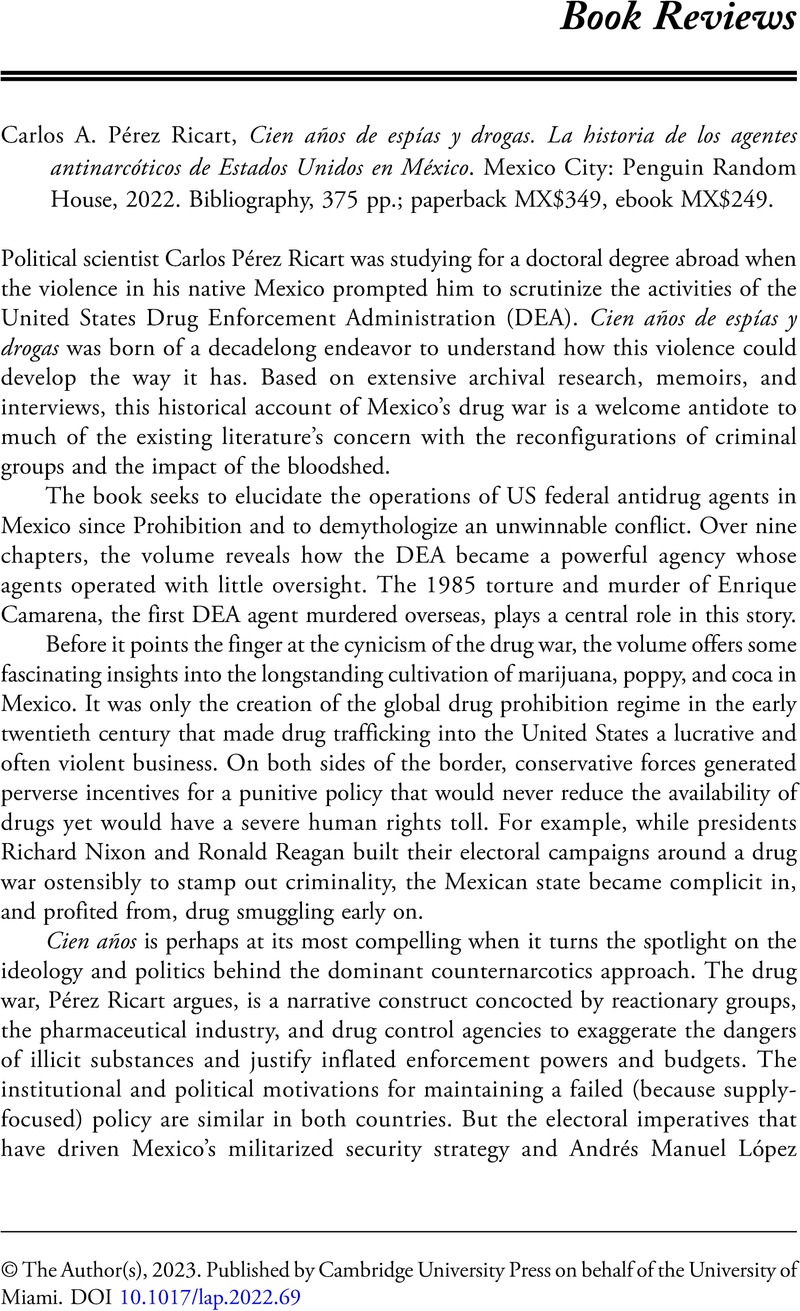No CrossRef data available.
Article contents
Carlos A. Pérez Ricart, Cien años de espías y drogas. La historia de los agentes antinarcóticos de Estados Unidos en México. Mexico City: Penguin Random House, 2022. Bibliography, 375 pp.; paperback MX$349, ebook MX$249.
Review products
Carlos A. Pérez Ricart, Cien años de espías y drogas. La historia de los agentes antinarcóticos de Estados Unidos en México. Mexico City: Penguin Random House, 2022. Bibliography, 375 pp.; paperback MX$349, ebook MX$249.
Published online by Cambridge University Press: 03 April 2023
Abstract
An abstract is not available for this content so a preview has been provided. Please use the Get access link above for information on how to access this content.

- Type
- Book Review
- Information
- Copyright
- © The Author(s), 2023. Published by Cambridge University Press on behalf of the University of Miami


